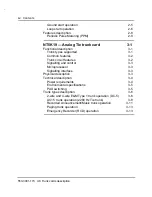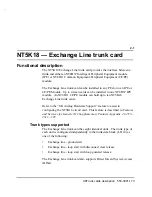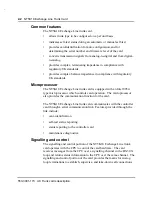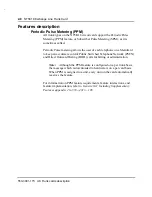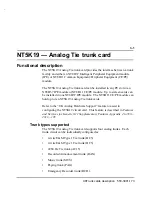
1-6 NT5K17 Direct Dialing Inward Trunk Card
553-3001-173 UK Trunk cards description
The transmission properties of each trunk are characterized by the class-of-
service (COS) assigned in the trunk data block (LD 14).
— PADs should be switched OUT when connecting to "long line"
(0-8 dB) public exchange trunk interfaces.
(COS = LOL)
— PADs may be switched IN when connecting to "short line" (0-6 dB)
public exchange trunk interfaces.
(COS = SHL)
Direct Dialling Inward description
Each unit on the NT5K17 DDI card is capable of operating as a DDI trunk.
Table 1-3 presents a summary of NT5K17 DDI trunk card signalling states.
For information on features and signalling arrangements, refer to Generic
X11 including supplementary features (PO730484 or NTCK09 in the UK)
Idle State
When the public exchange presents a high impedance of 8.5K ohms or
greater to the DDI unit, the NT5K17 DDI trunk card is in the idle state.
Ground is present on the A wire and negative battery (-48V) is present on
the B wire.
Seize
The public exchange initiates a call by placing a low resistance loop (2.2 K
ohms or less) across the A and B leads. The increased current flow will
trigger a front end detector. A message is sent to the Central Processing
Unit (CPU), and the microprocessor prepares for receipt of dialing digits.
Dialing
The public exchange sends address digits in the form of make and break
signals. Signalling rates are from 7 PPS to 12 PPS with a nominal rate of
10 PPS and a 40 to 84% break interval. Break impedance is 8.5 K ohms or
greater, while make impedance is 2.22K ohms or less.
Answer
When the terminating party answers, the DDI unit reverses battery and
ground on the A and B leads (-48V on A and Ground on B).
United Kingdom
United Kingdom
United Kingdom
United Kingdom
United Kingdom
United Kingdom




